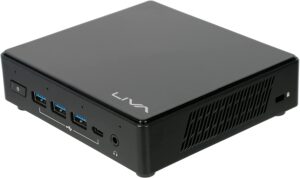Before AMD debuted the Athlon, ECS, meaning EliteGroup Computer Systems, became a well-known name, and ECS produced some cheap motherboards for such platform.
It expanded to be the fifth-largest motherboard manufacturer, with production sites in Asia & North America overseen by a Taiwanese headquarters.
ECS now produces a wide variety of equipment, including tablets, laptops, motherboards, IoT solutions, and mini-PCs, which we will be reviewing today.
Following the release of Intel’s new Jasper Lake-powered NUC devices, ECS has released the LIVA Z3 & Z3E series, which are tiny, cheap PCs with sufficient processing power for ordinary office tasks.
Is the Z3 worth the extra expense to acquire something so compact and silent, considering the low price and efficiency of current desktop systems?
What you will see here?
Price and availability
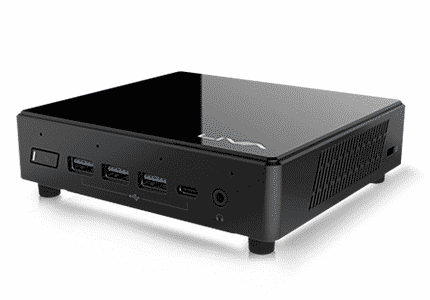
ECS provides three LIVA Z3 models, all of which appear to be the same on the surface. But differ slightly on the inside in terms of processor, RAM, and storage options.
The most affordable model includes a Celeron N4500 CPU, 4GB ram, and 64GB of eMMC memory. It costs £252 inside the UK & $194.88 on
The top model, the Z3, costs £300 in the UK and has a Pentium Silver N6000 processor & 128GB of eMMC memory, and only 4GB of RAM. On Newegg.com, we got the correct specs for $226.
It’s unclear why the Z3 costs more in Europe than in America, but it’s a great deal for Americans.
Design
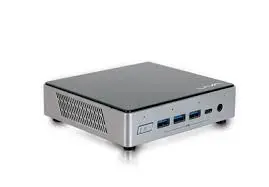
When Intel designed the NUC specification, it gave very little leeway for system makers to go off the beaten path, and the ECS EliteGroup LIVA Z3 adheres to those requirements to the letter.
This tiny computer, measuring 11.7 x 12.8 x 3.5 cm & weighing 1.31 KG, is as small as a Roku TV streaming box.
Because there isn’t much room for ports on such a little system, completely implements on the front and back of Z3.
There are 3 USB 3.2 Generation 1 ports, and one USB 3.2 Generation 2 USB-C port. A universal audio connector, as well as a power button located on the front. HDMI 2.0, Gigabit Ethernet, MiniDP, 2 USB 2.0 Type-A ports. As well as the PSU connection are all located on the back face.
Although the right face features a Kensington security slot, the sides are usually used for passive ventilation. Given how readily this hardware can be snatched, that final functionality would be useful.
A mounting plate and screws are included in the box, along with a brief instruction. The mounting plate is properly connected to the Z3 to the rear of a VESA-enabled monitor.
Because this plate stands square, it allows for certain orientation possibilities when mated with the display to make its power button & USB ports more accessible.
The majority of the structure is made of plastic, however, the underside is made of metal. The internals is held in place by a sturdy frame.
Other NUC manufacturers have opted for silver enclosures, which are often machined aluminum. ECS, on the other hand, used high black plastic, despite its proclivity for attracting dust.
It’s only when you look inside the Z3 that things start to get intriguing.
Hardware
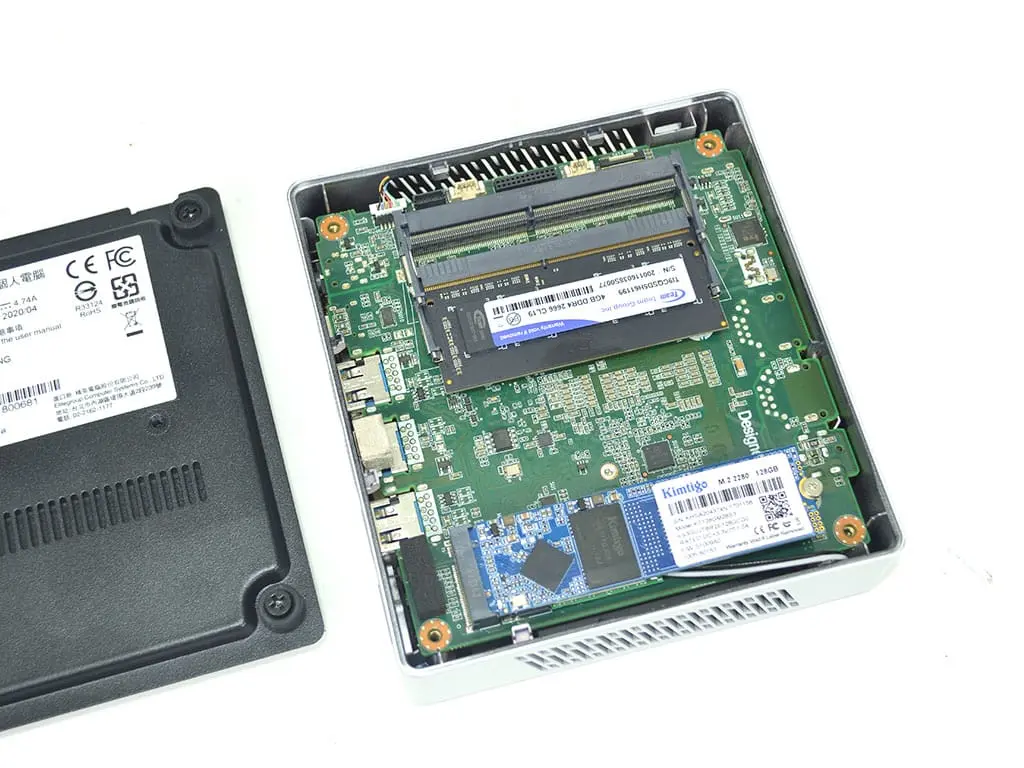
The ECS EliteGroup LIVA Z3 power by Intel’s new Jasper Lake SoC, which announce in Q1 2021 and hailed as a major upgrade over the prior Gemini Late CPUs, particularly in terms of GPU performance.
It is a 10nm chip, that may not seem noteworthy given AMD’s use of 5nm wafers, however for Intel, this scale reduction is significant.
A Pentium Silver N6000, a 6W TDP quad-core CPU with 32EU UHD Graphics, is the processor of choice in our review computer.
Although Intel has a slightly faster N6005 SoC, it has a 10W TDP that requires ongoing cooling in a case that compact, which may explain why ECS chose the N6000 as the series’ top option.
The N6000 has a basic clock speed of 1.1GHz and can turbo boost a single thread to 3.4GHz for a brief time. This is a quad-core device with no hyperthreading, and thermal sensors control the clock frequency to prevent overheating.
The Atom name apply in the past, but Intel do not like the connotations with that brand and instead chose their marketing-by-committee favorite ‘Pentium Silver.’
The standard capacity is 128GB of eMMC memory, which doesn’t leave much spare space after the pre-installed Windows Pro 10 takes up its working and recovery space.
The unit comes with 4GB of DDR4 RAM, which can expand to 16GB by the user, and the flexibility to expand the memory & storage is undoubtedly one of its best features.
ECS EliteGroup LIVA Z3: Motherboard easily accessed
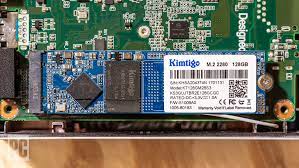
The motherboard can access easily by removing four screws from the underside, and the 3 components can change or substitute. A 2230 PCIe M.2 linked WiFi module, 2 SO-DIMM slots, and a single available 2280 M.2 slot are among the features.
The eMMC drive isn’t accessible or detachable. But an NVMe disc in the 2280 M.2 socket should be able to boot the system.
ECS installed 4GB of DDR4 memory in dual 2GB. Therefore-DIMMs, so upgrading would necessitate the removal of one or both of them.
Setup
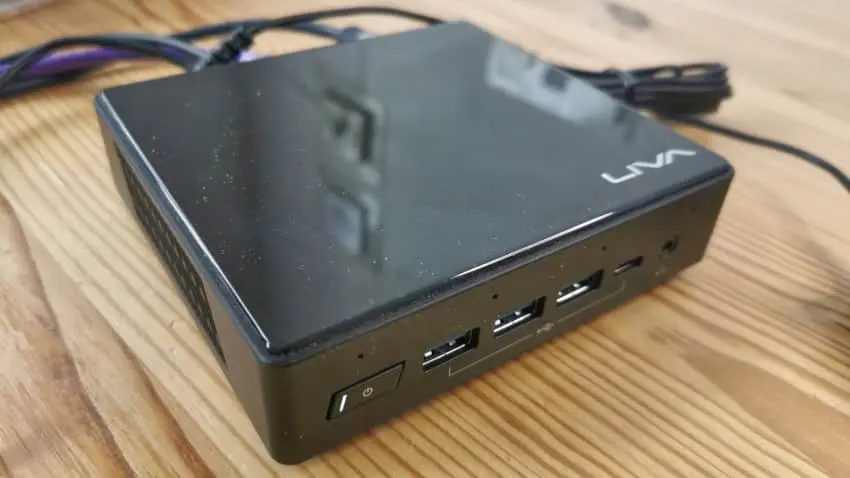
An ECS EliteGroup LIVA Z3 is a simple system to set up. If you have a keyboard, a monitor, and a mouse to complete the setup.
With all the connections coming into the back and whatever else you opt to attach to the front. It appears a bit jumbled for all those installing it to a desktop.
Using a VESA mount and attaching it to the back of a compatible monitor may be a better alternative. Our main criticism is that turning it on and utilizing the front-facing USB devices might be inconvenient. This is especially true if you have a huge monitor.
An USB Hub linked via the USB 3.2 Gen 2 connection would be a useful investment in this regard. This Allows the USB ports to add in a much more accessible location.
Even though this machine is an upgrade over the Gemini Lake systems which came before it, there remain performance concerns. Even with these improvements, though, this system is best well-suit for light office work.
Though, it has some options that can use to elevate its abilities a little.
Performance

We could make it sound better, but the ECS EliteGroup LIVA Z3 isn’t a performance beast in any case.
The quad-core CPU, which lacks the energy budget to activate Turbo mode in any substantial way, is one of the two limiting reasons.
The system runs at roughly 1.1GHz most of the time and behaves as you’d expect from a computer with a low clock speed. Because the CPU on this platform cannot substitute, the owner must accept this.
Although Jasper Lake’s graphics advancements allow it to play 4K streaming video, it’s close to its limits. We wouldn’t recommend utilizing two 4K panels. Even though they link through HDMI & Mini DisplayPort.
For completeness, performed Fire Strike & Time Spy on the 3DMark tests. However, the fps on both were abysmal, frequently failing to reach 5 frames per second. Even the laptop-specific test, Wild Life, is a challenge with this CPU & GPU combination.
The eMMC memory module, which acts as the primary storage drive, is the Z3’s single worst feature.
Z3 Features
Fortunately, the ECS EliteGroup LIVA Z3 features an M.2 slot. So we strongly suggest Z3 buyers purchase a 500GB NVMe drive. To clone the system to it before installing programs and user data. The $50 investment might make the Z3’s user experience less irritating and, to some extent, change it.
A Kingston KC3000 drive reads at over 1,700MB/s and writes at nearly that speed. This drive’s somewhat poor performance reveals that the M.2 slot only has two PCIe lanes, rather than the customary 4. However, the performance is still seven times that of eMMC storage.
When branded business PC mini-tower design with such a Core i5 processor can be bought for less money and performs far better than the Z3. It begs the question of how this machine was compromised to make it fanless and so tiny.
Conclusion
It’s easy to be harsh on a device with only 6W of power available to power its SoC. This includes the CPU, GPU, and all other components.
These are, however, constraints imposed by Intel with such an SoC silicon and the passively cooled NUC design that surrounds it.
There are other cost-effective ways to give this capability unless you have a unique need to transform monitors into conveniently transportable systems or for light office use.
You can’t deny that the new Jasper Lake chips are superior to the Gemini Lake chips in terms of performance. However, even with these new CPUs, performance isn’t great, and the device isn’t cheap when compared to branded entry-level office computers.
In a nutshell, in a bar, the 3 Caballeros of performance, scale, and thermodynamics meet. A brawl began where no one got safe.
Read more:
- Best wireless earbuds that offer long battery life!
- Windows 11 is free, but your CPU might not be officially supported!
- The best motherboards you can get to boost gaming performance!
- Using Memories in the Photos app on your iOS device!
- Increase the processing power with the best Processor for your PC!



